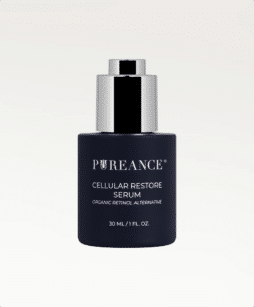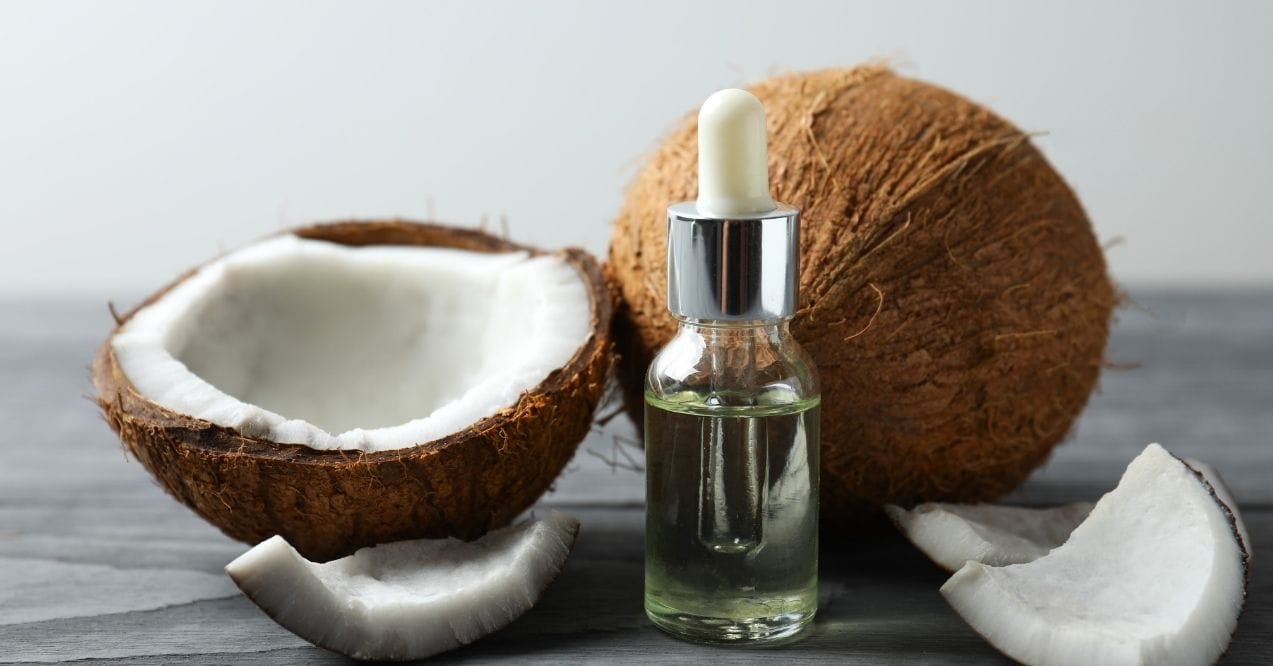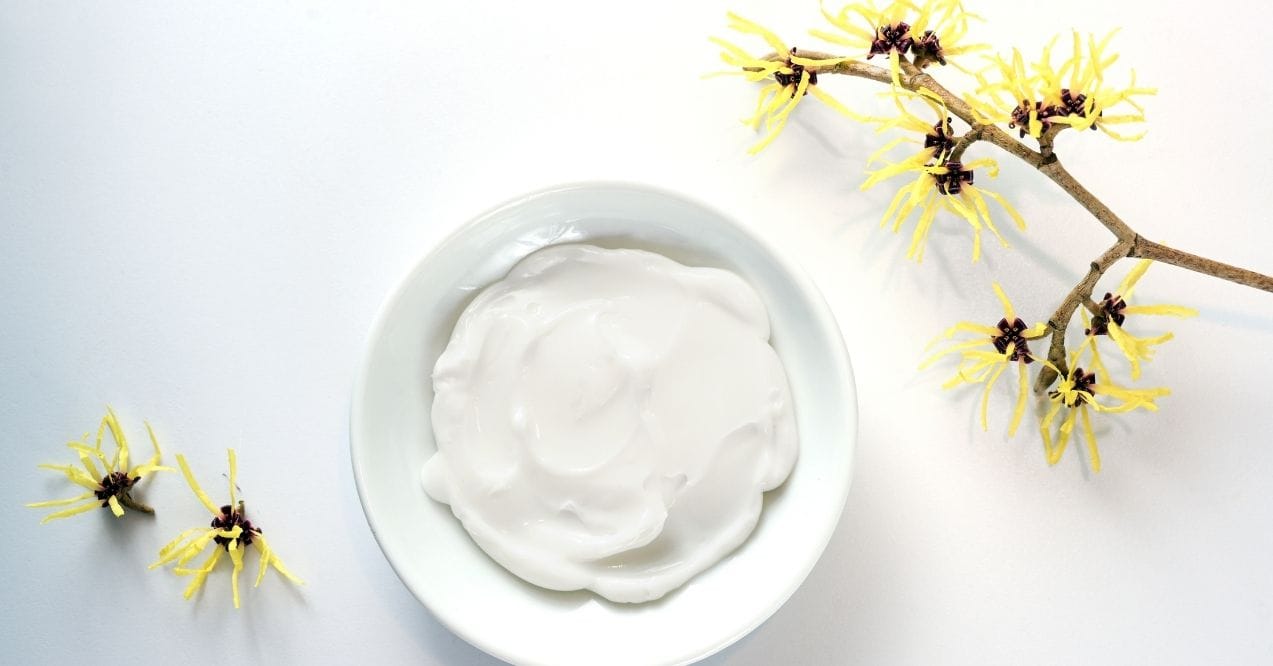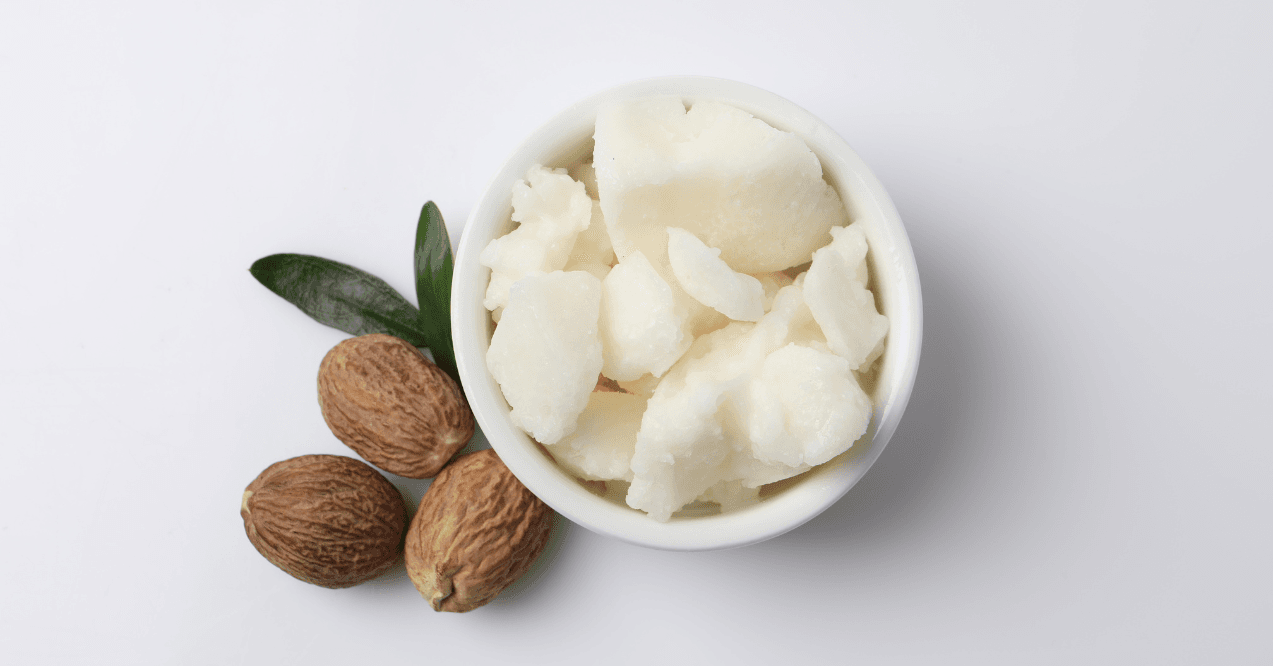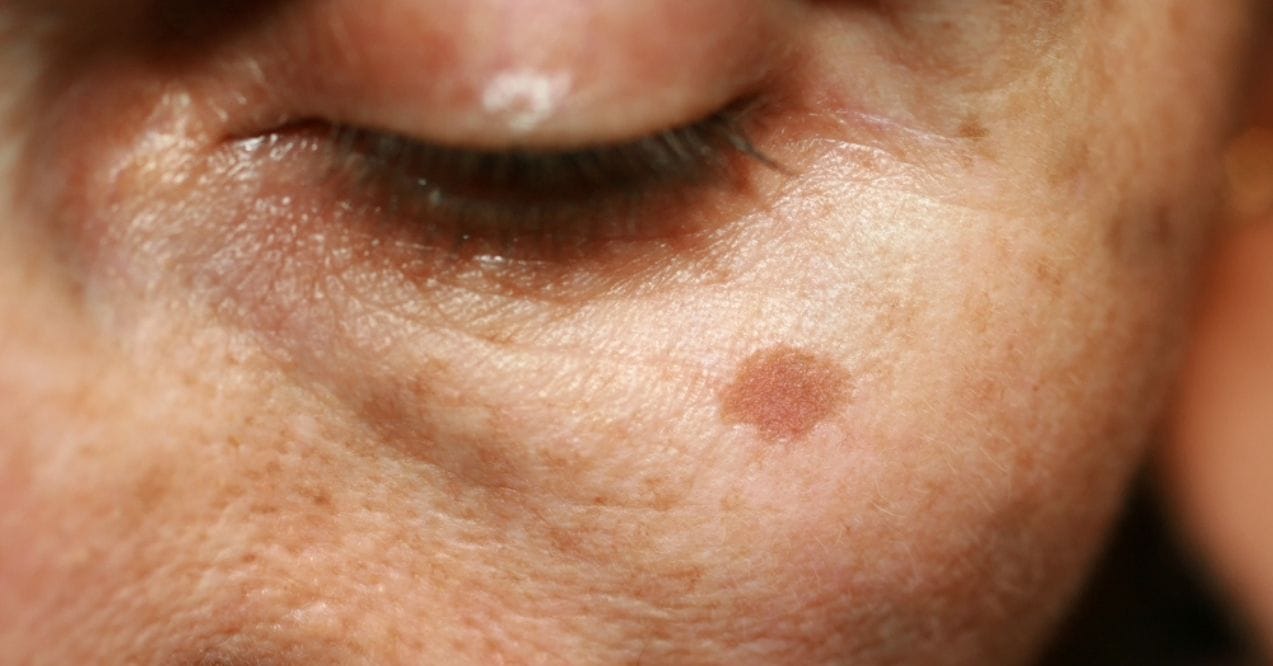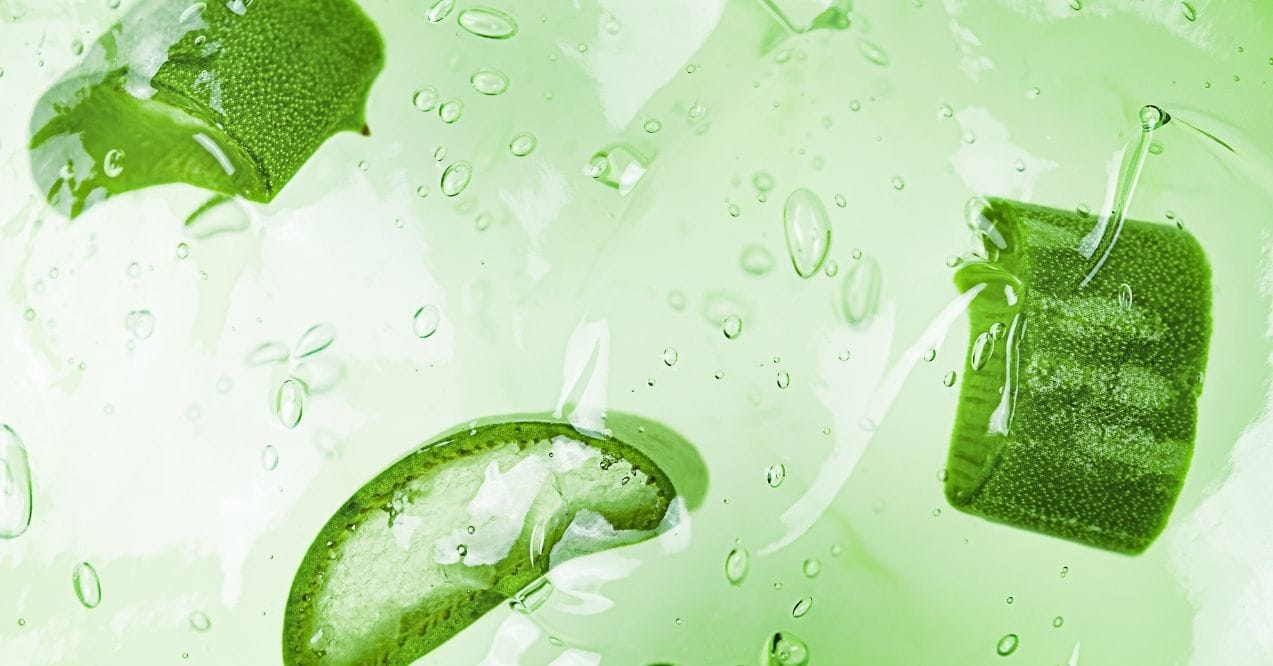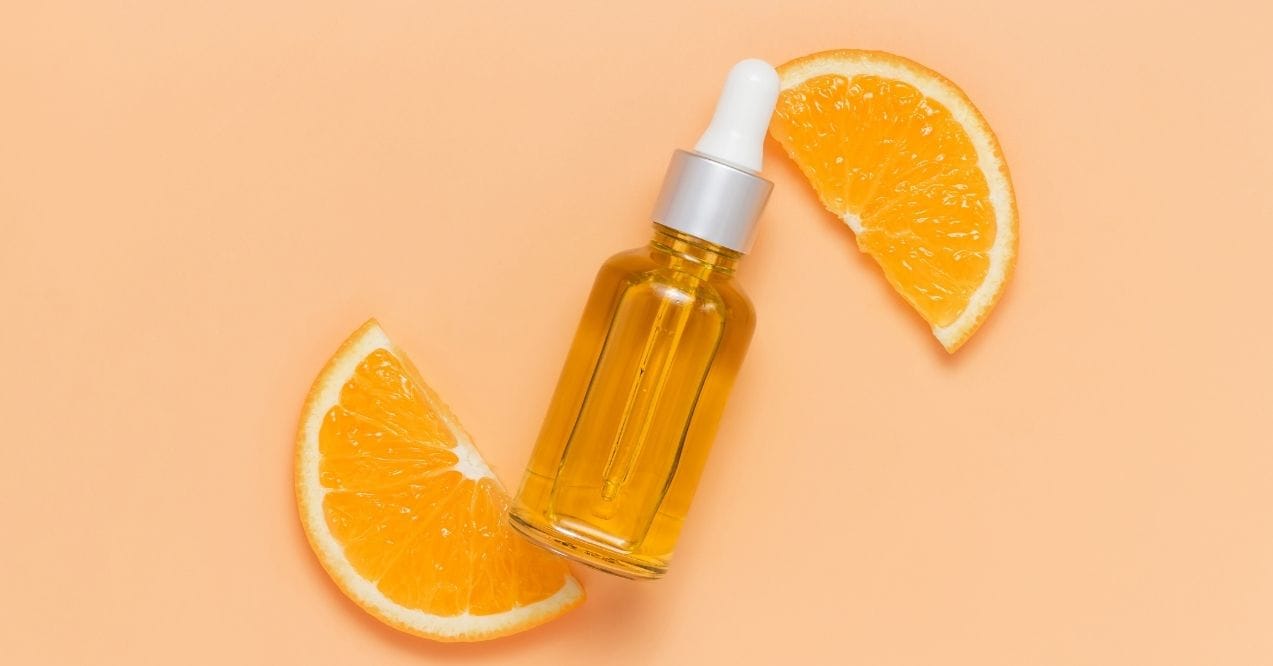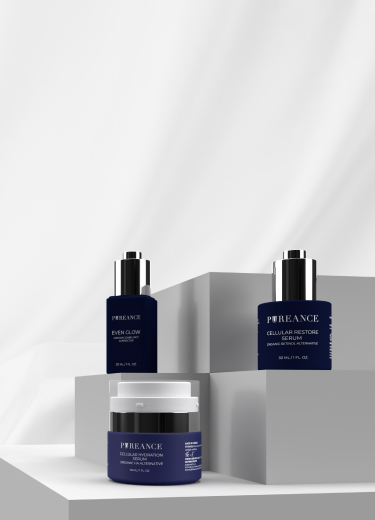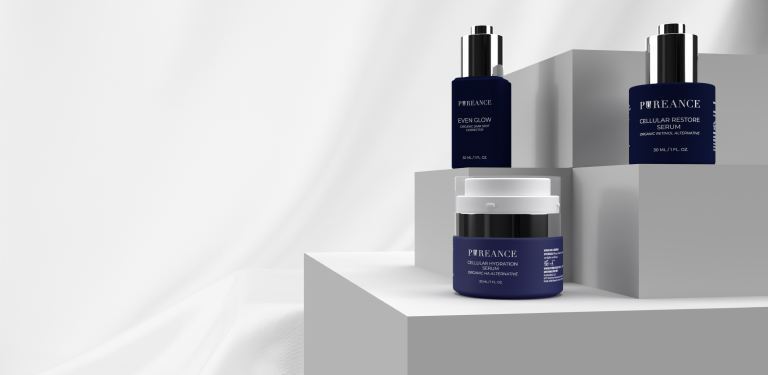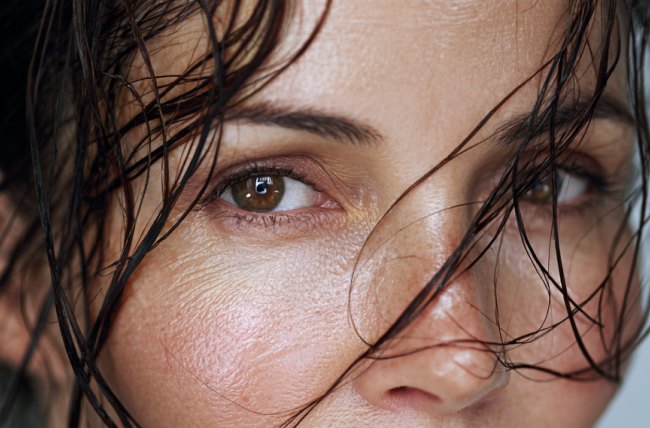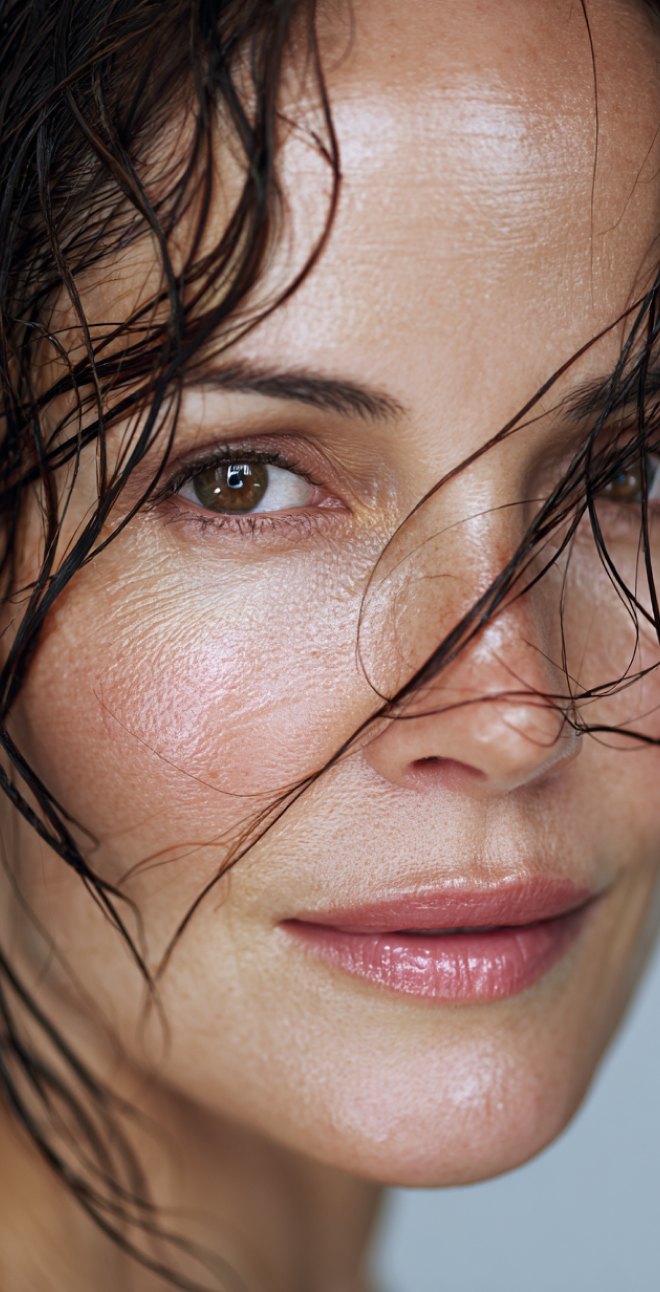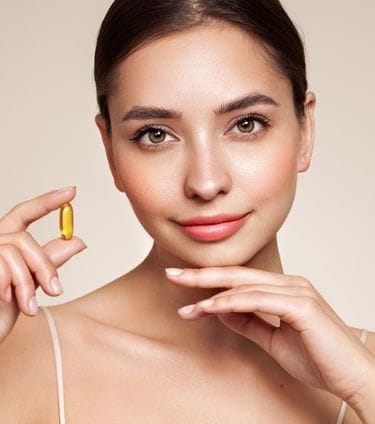
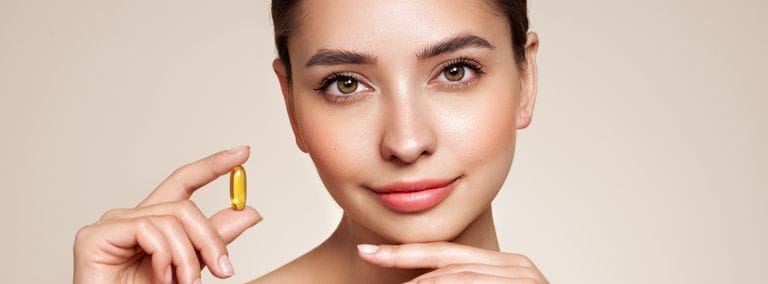

Does Vitamin E Help With Dark Spots?
Dark spots and uneven skin tone can appear as we mature, often showing up as unwelcome souvenirs from sun-filled days or hormonal changes. These patches of hyperpigmentation can affect how we feel about our skin’s appearance. Among the many ingredients touted for skin brightening, Vitamin E stands out as a popular option.
But, does vitamin E help with dark spots? This question brings many women to search for natural solutions for a more even complexion. Let’s explore what Vitamin E can offer for those dealing with dark spots and how it fits into a complete skincare routine for mature skin.
Key Article Findings
- Vitamin E reduces dark spots through antioxidant protection and skin renewal support.
- Results require consistent application for 8-12 weeks.
- Combining vitamin E with complementary ingredients like vitamin C and using sunscreen daily creates the most effective strategy for addressing dark spots.
How Vitamin E Helps with Dark Spots
Vitamin E is a powerful skincare ally for those dealing with dark spots on mature skin. This fat-soluble nutrient works in multiple ways to improve the appearance of hyperpigmentation while supporting overall skin health.
Antioxidant Properties
Vitamin E serves as one of nature’s most effective antioxidants for the skin. It neutralizes harmful free radicals that damage skin cells and trigger excess melanin production. When applied topically, vitamin E creates a protective shield against environmental stressors like UV exposure and pollution.
This protection is especially important for mature skin, which naturally has fewer defenses against oxidative stress. By reducing this oxidative damage, vitamin E for hyperpigmentation helps prevent the formation of new dark spots while supporting the skin’s natural renewal process.
The antioxidant action also helps preserve collagen and elastin, giving your skin a more even tone and texture alongside addressing dark spots.
Anti-Inflammatory Benefits
Inflammation often triggers or worsens hyperpigmentation, especially in mature skin. When skin becomes inflamed due to sun exposure, hormonal changes, or skin irritation, it can respond by producing more melanin.
Vitamin E and hyperpigmentation have a beneficial relationship because of the vitamin’s calming properties. It helps soothe irritated skin and reduce redness, which can prevent post-inflammatory hyperpigmentation from forming.
For women with sensitive mature skin, this anti-inflammatory action makes vitamin E particularly valuable. It helps break the cycle of irritation and pigmentation that can be challenging to address with more aggressive brightening ingredients.
The Benefits of Vitamin E for Hyperpigmentation
When it comes to addressing dark spots, vitamin E offers multiple benefits that work together to improve the appearance of hyperpigmentation. This powerhouse nutrient supports your skin’s natural processes while providing targeted help for areas of uneven pigmentation.
Skin Regeneration and Collagen Production
Vitamin E plays a crucial role in supporting your skin’s renewal cycle, which is essential to know for those wondering how to brighten skin naturally. As we mature, this renewal process slows down, making dark spots more persistent.
- Accelerates cellular turnover to help shed pigmented cells faster
- Supports the formation of new, evenly toned skin cells
- Helps maintain moisture in the skin, creating an optimal environment for healing
The nutrient also supports collagen production, which becomes increasingly important for mature skin. Stronger collagen structures create a smoother canvas for light reflection, making dark spots less noticeable while improving overall skin texture.
- Protects existing collagen from oxidative damage
- Supports the skin’s natural repair mechanisms
- Helps improve skin resilience against environmental factors
Even Skin Tone
Vitamin E for lightening skin works gradually but effectively by addressing several factors that contribute to uneven pigmentation. Rather than bleaching the skin, it helps normalize melanin production and distribution.
- Helps fade existing dark spots by supporting natural skin renewal
- Creates a protective barrier against UV-induced pigmentation
- Improves microcirculation, which helps nutrients reach the skin
For mature skin, vitamin E’s moisture-preserving properties also help prevent the dryness that can make dark spots appear more pronounced. The improved hydration creates a plumper skin surface that reflects light more evenly, creating the appearance of a more uniform complexion.
- Enhances skin’s natural luminosity and radiance
- Smooths rough patches that can emphasize dark spots
- Complements other brightening ingredients for enhanced results
How to Use Vitamin E for Dark Spots
Incorporating vitamin E into your skincare routine can be simple and effective when you know the right techniques. Here’s how to make the most of this ingredient for addressing hyperpigmentation on mature skin.
Application Techniques
When using vitamin E for dark spots, consistency is key. The method of application can significantly impact your results.
- Apply vitamin E products to clean, slightly damp skin for better absorption
- Use gentle, upward circular motions when applying to enhance circulation
- For targeted treatment, apply a small amount directly to dark spots
- For overall prevention, apply all over the face
For mature skin, evening application is often most beneficial as this is when skin naturally enters its repair cycle. Start with a small amount, as vitamin E products can be rich in texture. Most women see gradual improvement when used consistently over 8-12 weeks.
Combining Vitamin E with Other Ingredients
While vitamin E is effective on its own, it works even better when paired with complementary ingredients.
- Mix vitamin E with vitamin C for enhanced brightening effects
- Layer under sunscreen during daytime for additional protection
- Combine with hyaluronic acid for added hydration benefits
- Use alongside alpha hydroxy acids (AHAs) to enhance cell turnover
Many women find that using an oil for hyperpigmentation that combines vitamin E with other plant oils can be particularly effective for mature skin. Look for formulations that include oils like rosehip, argan, or sea buckthorn, which offer additional nutrients that support skin repair.
Does Vitamin E Get Rid of Dark Spots?
When it comes to vitamin E and dark spots, many women wonder if this nutrient can completely eliminate hyperpigmentation. The answer requires understanding both the potential and limitations of vitamin E for mature skin.
Realistic Expectations
Vitamin E can significantly improve the appearance of dark spots, but it works gradually rather than providing overnight transformation. The ingredient helps support your skin’s natural repair processes while protecting against further damage.
- Most women notice subtle improvements after 4-6 weeks of regular use
- More significant fading typically occurs after 8-12 weeks
- Deeper or more persistent dark spots may take several months to show improvement
The effectiveness also depends on the type of hyperpigmentation you’re addressing. Sun-induced spots often respond well to vitamin E, while hormonal melasma may require additional approaches alongside vitamin E.
Consistency in Treatment
The key to seeing results with vitamin E lies in faithful, everyday application. Unlike more aggressive treatments, vitamin E works gently and builds results over time.
- Apply vitamin E products at the same time each day to establish a routine
- Continue use even after initial improvements to maintain results
- Pair with sun protection to prevent new dark spots from forming
For mature skin, this consistent approach often proves more beneficial than harsh treatments that might create irritation. While vitamin E won’t completely erase all signs of hyperpigmentation, many women find that the gradual lightening, combined with overall skin health benefits, makes it a worthwhile addition to their skincare routine.
Alternatives and Complementary Treatments
While vitamin E offers significant benefits for dark spots, combining it with other targeted ingredients can enhance your results. These complementary treatments work through different mechanisms to address hyperpigmentation from multiple angles.
Vitamin C
Does vitamin C help with hyperpigmentation? Absolutely – it’s one of the most effective ingredients for brightening uneven skin tone. Vitamin C works by inhibiting the enzyme tyrosinase, which is responsible for triggering melanin production.
- Brightens existing dark spots while preventing new ones
- Provides additional antioxidant protection against UV damage
- Supports collagen production for improved skin texture
For those wondering how to use vitamin C for dark spots, apply it in the morning before sunscreen. This timing allows vitamin C to boost your sun protection while actively working on hyperpigmentation throughout the day.
Sunscreen and UV Protection
Sun protection is non-negotiable when addressing dark spots, as UV exposure is the primary trigger for most hyperpigmentation.
- Choose a broad-spectrum SPF 30+ sunscreen and apply generously
- Reapply every two hours when outdoors
- Consider mineral sunscreens with zinc oxide for sensitive mature skin
Conclusion
The journey to more even-toned skin often leads many women to explore natural ingredients like vitamin E. So does vitamin E help with dark spots? The evidence suggests it can be a valuable ally in your skincare routine. With its powerful antioxidant properties and ability to support skin renewal, vitamin E offers a gentle yet effective approach for mature skin.
While not a quick fix, consistent use combined with sun protection and complementary ingredients like vitamin C creates a comprehensive strategy for addressing hyperpigmentation. Your path to brighter, more evenly toned skin may be as close as this versatile vitamin.
Yes, vitamin E oil can help fade dark spots by providing antioxidant protection, supporting skin cell regeneration, and reducing inflammation. It works gradually when applied consistently to improve the appearance of hyperpigmentation on mature skin.
Vitamin E helps with hyperpigmentation by neutralizing free radicals, supporting skin renewal, and providing anti-inflammatory benefits. It gradually evens skin tone by addressing oxidative damage that contributes to uneven pigmentation in mature skin.
Most women notice subtle improvements after 4-6 weeks of daily vitamin E application. More significant fading typically occurs around 8-12 weeks, while deeper or persistent dark spots may require several months of consistent use.
Vitamin E significantly improves dark spots’ appearance but rarely eliminates them completely. It works best for sun-induced hyperpigmentation and delivers gradual lightening rather than total removal, especially on mature skin.
Vitamin E helps prevent future dark spots by neutralizing free radicals, reducing UV damage, and strengthening the skin barrier. When paired with daily sunscreen, it creates a protective shield that minimizes new hyperpigmentation formation.
This site offers health, wellness, fitness and nutritional information and is designed for educational purposes only. You should not rely on this information as a substitute for, nor does it replace, professional medical advice, diagnosis, or treatment. If you have any concerns or questions about your health, you should always consult with a physician or other health-care professional. Do not disregard, avoid or delay obtaining medical or health related advice from your health-care professional because of something you may have read on this site. The use of any information provided on this site is solely at your own risk.
Nothing stated or posted on this site or available through any services are intended to be, and must not be taken to be, the practice of medical or counseling care. For purposes of this agreement, the practice of medicine and counseling includes, without limitation, psychiatry, psychology, psychotherapy, or providing health care treatment, instructions, diagnosis, prognosis or advice.
